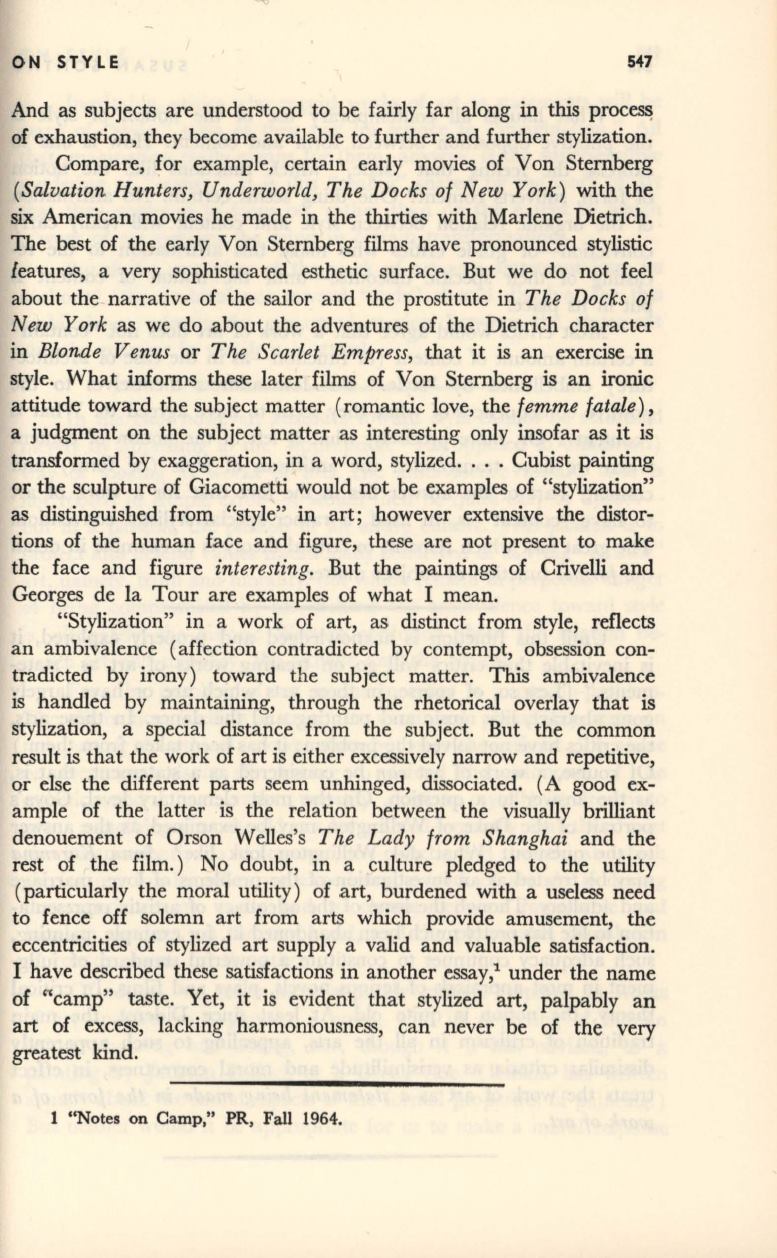
ON STYLE
547
And as subjects are understood to be fairly far along in this
proc~
of exhaustion, they become available to further and further stylization.
Compare, for example, certain early movies of Von Sternberg
(Salvation Hunters, Underworld, The Docks of New York)
with the
six
American movies he made in the thirties with Marlene Dietrich.
The best of the early Von Sternberg films have pronounced stylistic
features, a very sophisticated esthetic surface. But we do not feel
about the narrative of the sailor and the prostitute in
The Docks of
New York
as we do about the adventures of the Dietrich character
in
Blonde Venus
or
The Scarlet Empress,
that it is an exercise in
style. What informs these later films of Von Sternberg
is
an ironic
attitude toward the subject matter (romantic love, the
femme fatale),
a judgment on the subject matter as interesting only insofar as it
is
transformed by exaggeration, in a word, stylized. . . . Cubist painting
or the sculpture of Giacometti would not be examples of "stylization"
as distinguished from "style" in art; however extensive the distor–
tions of the human face and figure, these are not present to make
the face and figure
interesting.
But the paintings of Crivelli and
Georges de la Tour are examples of what I mean.
"Stylization" in a work of art, as distinct from style, reflects
an ambivalence (affection contradicted by contempt, obsession con–
tradicted by irony) toward the subject matter. This ambivalence
is
handled by maintaining, through the rhetorical overlay that
is
stylization, a special distance from the subject. But the common
result is that the work of art
is
either excessively narrow and repetitive,
or else the different parts seem unhinged, dissociated. (A good ex–
ample of the latter is the relation between the visually brilliant
denouement of Orson Welles's
The Lady from Shanghai
and the
rest of the film.) No doubt, in a culture pledged to the utility
(particularly the moral utility) of art, burdened with a useless need
to fence off solemn art from arts which provide amusement, the
eccentricities of stylized art supply a valid and valuable satisfaction.
I have described these satisfactions in another essay/ under the name
of "camp" taste. Yet, it is evident that stylized art, palpably an
art of excess, lacking harmoniousness, can never be of the very
greatest kind.
1 "Notes on Camp," PR, Fall 1964.


